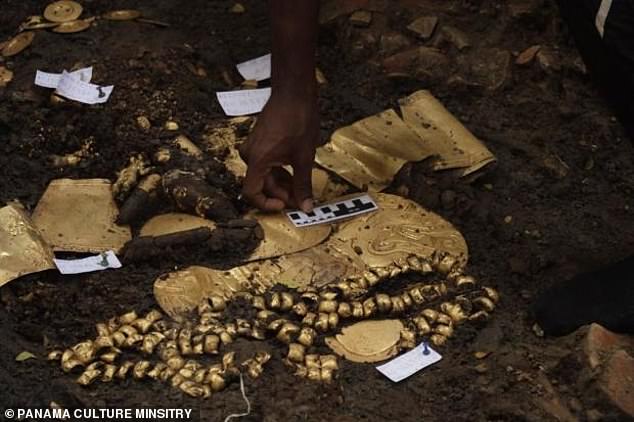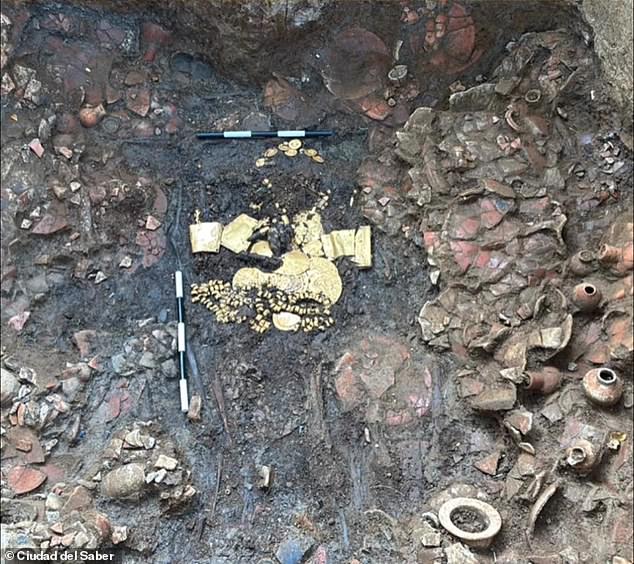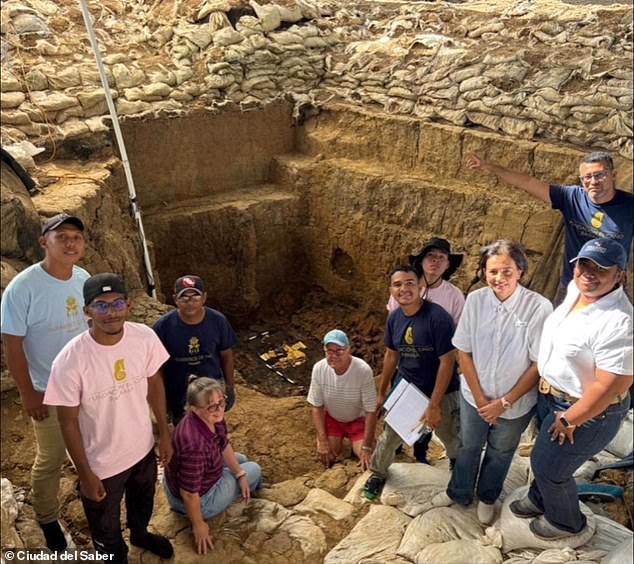- Up to 31 companions of sacrifice were discovered at the site
- Archaeologists found belts made of gold beads and earrings set in gold.
- The buried man was buried face down on the body of a murdered companion.
<!–
<!–
<!– <!–
<!–
<!–
<!–
The tomb of an important ancient lord was discovered at an archaeological site in Panama.
Inside the tomb, which is about 1,200 years old, archaeologists discovered a sumptuous collection of gold treasures: belts made of gold beads, gold-plated whale-tooth earrings, and a set of circular gold plates.
But the tomb of chief Colcé (750-800 AD), who was between 30 and 40 years old at the time of his death, contained something darker: the bodies of sacrificial victims who were to accompany their lord to the “beyond.” “. ‘
Another 31 people were buried alongside the former ruler, although the real number is unknown, as the excavation of the tomb continues in the El Caño Archaeological Park.

Archaeologists unearthed belts made of gold beads, earrings with gold-plated whale teeth, and a set of circular gold plates.


But the site offered more than treasure: the remains of up to 31 sacrificial victims were also unearthed.


Archaeologists made the discovery at the El Caño Archaeological Park, home to an ancient necropolis that was used between 700 and 1000 AD
The powerful lord was buried in a posture that was common in this elaborate form of burial.
According to a statement from Panama’s Ministry of Culture, the high-status man was buried ‘face down’.
And he was buried on top of ‘the body of a woman’.
For researchers, the richness of the discovery was not in the gold loot, but in the style of burial.
Archaeologists refer to collective burials like this as multiple, simultaneous burials.
“We call them that because they consist of burials of a variable number of people (between eight and 32 people),” Dr. Julia Mayo, who directs the excavation, told the Panama Ministry of Culture.
These people were sacrificed before burial, so that they could accompany their lord to the afterlife.
Sitio El Caño, where the tomb was discovered, served as a necropolis (a city for the dead) from 700 AD to 1000 AD, when it was abandoned for unknown reasons. It once contained monoliths, a cemetery and a ceremonial space.
The tomb was built around 750 AD and excavators also unearthed ceramic artifacts and jewelry.
They found five pectorals, four bracelets, two earrings in the shape of human figures (a man and a woman), an earring in the shape of a double crocodile, bells, plates and a necklace.
There were also bracelets and skirts made from dog teeth and a set of bone flutes.
The Ministry of Culture praised the find not only for its “economic value”, but also for its “incalculable historical value.”
